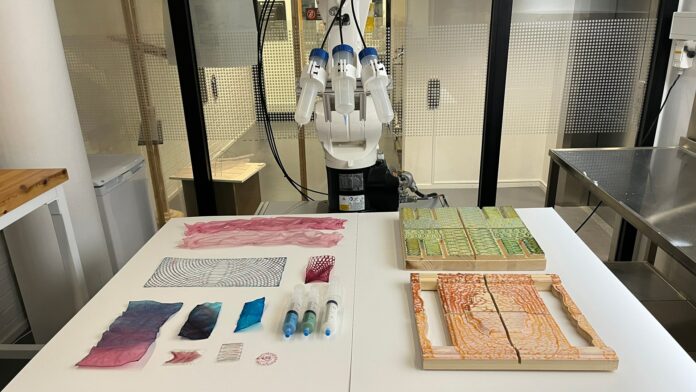Researchers at Chalmers University of Technology in Sweden and the Wallenberg Wood Science Center have developed a new, sustainable material for use in construction. Made of nanocellulose and algae, the hydrogel material can be 3D printed into a variety of architectural components, using much less energy than conventional construction methods.
The construction industry is responsible for 40% of global waste and 39% of global carbon dioxide emissions. The new material offers a more environmentally friendly alternative to traditional building materials, which are designed to last for hundreds of years and often contain non-renewable resources.
The nanocellulose used in the hydrogel can be acquired from forestry, agriculture, paper mills, and straw residues from agriculture. The material has been extensively used in biomedicine in the past, but it has never been dried and used as an architectural material before.
The energy-efficient process relies on the shear thinning properties of the nanocellulose hydrogel, which liquifies under pressure, allowing it to be 3D printed. The researchers have also designed different toolpaths in the robotic 3D printing process to see how the material would behave when it dried in different shapes and patterns.
The new material opens up new possibilities for architects and designers to create a range of architectural standalone components, such as lightweight room dividers, blinds, and wall panel systems. It could also be used to coat existing building components such as tiles to clad walls, acoustic elements for damping sound, and combined with other materials to clad skeleton walls.
According to Malgorzata Zboinska, lead author of the study, “Design researchers and architects are now intensely searching for ways of designing products made from these materials, both for function and for aesthetics.” The new material is a significant step in the transition to a greener future in line with the European Green Deal, which calls for more resource-efficient buildings and elevated reuse and recycling of materials.
The researchers hope that the new material could be scaled up for use in larger construction projects in the future.
Journal Reference
- Zboinska, M. A., Sämfors, S., & Gatenholm, P. (2023). Robotically 3D printed architectural membranes from ambient dried cellulose nanofibril-alginate hydrogel. Materials & Design, 236, 112472. DOI: 10.1016/j.matdes.2023.112472
